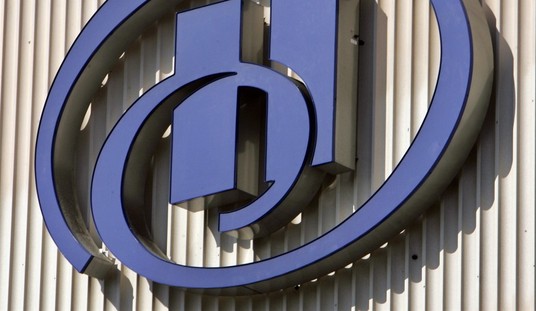A novelist and author named Nicholson Baker has written a lengthy examination of the so-called lab-leak hypothesis, i.e. the possibility that COVID didn’t arise naturally but was manipulated in a lab before escaping by accident. Baker admits in the first paragraph that he believes the virus was “designed” but he’s not dismissing the possibility that all of this happened by chance either. What he wants is to have the lab-leak considered as a real possibility and not dismissed as a conspiracy theory.
…consider the cautious words of Alina Chan, a scientist who works at the Broad Institute of MIT and Harvard. “There is a reasonable chance that what we are dealing with is the result of a lab accident,” Chan told me in July of last year. There was also, she added, a reasonable chance that the disease had evolved naturally — both were scientific possibilities…
I asked Jonathan A. King, a molecular biologist and biosafety advocate from MIT, whether he’d thought lab accident when he first heard about the epidemic. “Absolutely, absolutely,” King answered. Other scientists he knew were concerned as well. But scientists, he said, in general were cautious about speaking out. There were “very intense, very subtle pressures” on them not to push on issues of laboratory biohazards. Collecting lots of bat viruses, and passaging those viruses repeatedly through cell cultures, and making bat-human viral hybrids, King believes, “generates new threats and desperately needs to be reined in.”
“All possibilities should be on the table, including a lab leak,” a scientist from the NIH, Philip Murphy — chief of the Laboratory of Molecular Immunology — wrote me recently. Nikolai Petrovsky, a professor of endocrinology at Flinders University College of Medicine in Adelaide, Australia, said in an email, “There are indeed many unexplained features of this virus that are hard if not impossible to explain based on a completely natural origin.” Richard Ebright, a molecular biologist at Rutgers University, wrote that he’d been concerned for some years about the Wuhan laboratory and about the work being done there to create “chimeric” (i.e., hybrid) SARS-related bat coronaviruses “with enhanced human infectivity.” Ebright said, “In this context, the news of a novel coronavirus in Wuhan ***screamed*** lab release.”
But for every scientist who thought a lab-release should be considered there were more who organized to discount the idea:
In The Lancet, in February, a powerful counterstatement appeared, signed by 27 scientists. “We stand together to strongly condemn conspiracy theories suggesting that COVID-19 does not have a natural origin,” the statement said. “Scientists from multiple countries have published and analyzed genomes of the causative agent, severe acute respiratory syndrome coronavirus 2 (SARS-CoV-2), and they overwhelmingly conclude that this coronavirus originated in wildlife, as have so many other emerging pathogens.”
But ultimately neither side in this debate can pinpoint an exact point of origin. For those arguing for a natural origin, that would mean some transition mammal that gave the virus the ability to replicate well in human tissue. Thus far several possibilities from rats to pangolins have been proposed but no exact match has been found. Baker’s argument comes down to this: What are the odds this outbreak began by chance in the only place in the world where very similar bat coronaviruses are being studied?
I keep returning to the basic, puzzling fact: This patchwork pathogen, which allegedly has evolved without human meddling, first came to notice in the only city in the world with a laboratory that was paid for years by the U.S. government to perform experiments on certain obscure and heretofore unpublicized strains of bat viruses — which bat viruses then turned out to be, out of all the organisms on the planet, the ones that are most closely related to the disease. What are the odds?
There’s much more to this piece than the argument over how this arose. Baker explains in detail how so-called Gain of Function research with coronaviruses was initially pushed and funded by the government under Anthony Fauci. Fauci, in 2014, eventually had second thoughts and put a pause on such research but the U.S. scientists who were doing the research in collaboration with Dr. Shi Zhengli of China continued to pursue it. That led to some concern from other scientiests that they were more likely to create an additional danger of an outbreak of some mutated virus than prevent one. And that’s exactly what Baker thinks happened:
Here’s what I think happened. In April 2012, in a copper mine in Mojiang, China, three men were given an awful job — they were told to shovel bat guano out of a mine shaft. They went to work and shoveled guano for seven hours a day in the confined, insufficiently ventilated space of the mine shaft, and by the end of the week, they were sick with a viral pneumonia of unknown etiology…
Of the fragmentary bits of virus Shi retrieved from the mine shaft, one was SARS-like, and Shi sequenced it and called it BtCoV/4991 and published a paper about it. Several times — in 2016 and 2018 and 2019 — this most interesting sample, a portion of what we now know as RaTG13, was taken out of the freezers in Shi’s lab and worked on in undisclosed ways…
…isn’t it possible that somebody in Wuhan took the virus that had been isolated from human samples, or the RaTG13 bat virus sequence, or both (or other viruses from that same mine shaft that Shi Zhengli has recently mentioned in passing), and used them to create a challenge disease for vaccine research — a chopped-and-channeled version of RaTG13 or the miners’ virus that included elements that would make it thrive and even rampage in people? And then what if, during an experiment one afternoon, this new, virulent, human-infecting, furin-ready virus got out?
Maybe that’s why, a full year after the start of the pandemic, China continues to refuse to release information about the origin of the virus. The BBC reported earlier this month that when reporters tried to reach the mine where COVID’s nearest known relative was discovered several years ago, they were blocked by people acting on government orders.
Ultimately, it’s not in China’s interest to have this pinned down even if the origin was completely natural. But their ongoing reluctance to openly investigate the origin of the most serious pandemic in a century is indistinguishable from the kind of guilt a nation might have if it had accidentally released this disaster from a lab. Their paranoid, PR-dominated view of the world makes them look guilty even if they’re not.








Join the conversation as a VIP Member